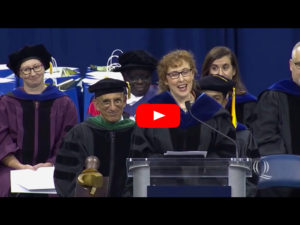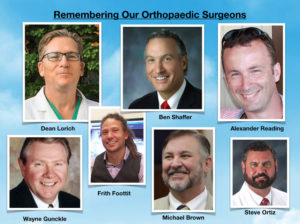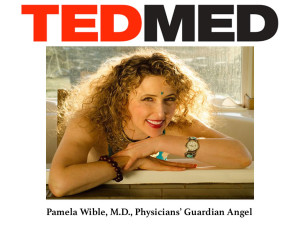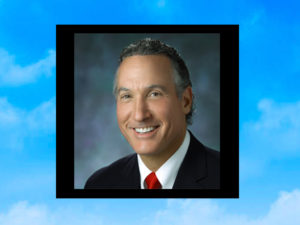
My med school was 5k/year. At graduation, I left with 22K of loans. That was 1993. University of Texas Medical Branch at Galveston—still one of the best deals in medical education (current tuition is 24K). During my first two years of family medicine residency on a salary of 30K/year, I paid off my loans. By age 36, I owned my house and was living debt free.
Now med students have 300K loans—or more. One mid-career physician friend has a debtload of 1 million—and growing. With compound interest it takes a lifetime to pay down med school debt. Some never do. I know trainees who have died by suicide next to unpaid med school bills, in essence their suicide note.
How can our doctors care for the most vulnerable and underserved patients when they themselves are so stressed by unmanageable debt? How can doctors live their dreams in medicine when many choose specialties based solely on perceived earning potential?
I’ve been running a doctor suicide hotline since 2012 and I hear from so many suicidal physicians and med students drowning in debt that I published their letters (with permission) in a section of Physician Suicide Letters—Answered entitled Death by Debt:
“I’m in my first year of practice and I can’t begin to tell you how often I think of death. Not because I hate my life—I have a wonderful husband and family. But the pressures of daily life as a doctor are overwhelming. I work constantly! Even on my days off, I’m working. When I take a day off, I pay for it later by double the amount of work waiting for me. I have patients yelling at me when all I wanted to do was help. They try to fool me and manipulate me. Insurance companies deny my patients help—leaving me with no resources to help. My boss is a douche—unethical and dangerous. I want to build relationships and do what’s right for my patients, but the company pushes me to see more and more patients in less and less time. I cry at work, I cry myself to sleep sometimes. I don’t feel depressed, and I know my life has value, but sometimes the thought of suicide is just to escape the pressure of the profession. It’s not like I can realistically give up the job, my calling. I’m neck deep in debt and will never be able to pay it back if I leave the profession. ~ Michelle”
“The decision to go to medical school was wrong. The idea that I could use the talents I have been blessed with to make a difference was a sham. I am called obscene names on satisfaction surveys by patients for not filling their prescriptions for narcotics/tranquilizers/amphetamines; called to task by supervisors for my arrogance at adhering to medical standards of care; and drowning in debt I can’t escape by bankruptcy. I am in the process of stacking my life insurance to adequately care for my wife and children. I know how and where. Knowing I am not alone does not change things. ~ Dylan”
“I’m a fourth-year med student in a below-average school on the East coast. I performed well throughout medical school (top 20%), and have above-average board scores. I’ve applied for residency positions in three different fields. Unfortunately, I’m not getting interviews like I thought I would. I was advised that my application is rock solid; in fact, competitive. Doesn’t seem to be the case given no interviews. I’m in significant debt (about $350,000), and though this is nothing foreign to med students, I come from a poor family and I would need to secure a residency to pay this back. Now here’s the thing. I don’t anticipate matching into a residency program and I’ve made the decision to possibly end it all once I don’t match. I have worked hard all my life. I did everything to get into the fields I’ve applied for (two of which are not even very competitive at all). Nothing has ever gone my way before or since starting medical school. I have gotten to this point after pushing through one struggle after another. During med school I had many significant tragedies in my family (deaths, illness, financial issues, to name a few). I fought through them. But I had to be cold to do it. I had to act like I did not care. I can’t keep doing that to my family. I changed careers to go to med school. I pushed them into debt that never existed before school. Now I am facing the possibility of having an MD with no job. ~ Kulthum”
Okay so what if you could live your dream in medicine, be your own boss, and get your loans forgiven. You CAN! Even without completing residency!
Fed up with assembly-line medicine in big-box clinics, I quit 6 jobs in 10 years. I was so disillusioned in my career, I became suicidal. The cure for my suicidal thoughts—was to open my own ideal medical clinic. I’ve been happy ever since. The crazy part is I earn three times as much per patient. I explain how I tripled my income in this wild Las Vegas keynote.
I’ve been in my own ideal clinic for 15 years and have now helped hundreds of doctors launch their own ideal clinics in almost every state of the country (even Canada & New Zealand). Now here’s the deal . . . if you launch your clinic in the USA as a nonprofit, you can get your loans forgiven in the the a program called PSLF (Public Service Loan Forgiveness). Here’s how it works. . .
Your loans are wiped clean after 10 years of loan payments. You must make a total on 120 payments to qualify. Yet these payments don’t have to be huge; they can be just a few hundred dollars when you take advantage of reduced payments through IBR (Income Based Repayments). Obviously it is best to start making these payments when your income is low. Like as a student or resident. If you are in residency at a nonprofit institution then you should definitely start IBR while in residency. Do not defer your payments.
Continue making payments as soon as you open your own nonprofit or work for another nonprofit or government job (and it doesn’t even have to be in health care!). Plus during COVID your loan payments are now zero! Yet you are still getting credit for having made a payment so definitely take advantage of this pandemic payment pause.
As a trainee, you are essentially paying a few hundred dollars with IBR during residency (and even less in med school IF you can start that soon – not sure about this but I bet if you are determined you can figure out how).
So if you have a 4-year residency at a nonprofit institution, you can pay a few hundred per month and get 4 years credit toward PSLF. IF (not sure depends on your loans) you start in med school your IBR would be near zero and you’d get 4 more years credit—again not sure about this though worth checking). Regardless you would only need a few more years at your own nonprofit, another nonprofit, or a government job like the VA to qualify for total forgiveness.
To qualify for PSLF, you have to work an average of 30 hours per week for a nonprofit (that would be a pretty relaxed residency). You can see patients in your own nonprofit clinic or do primarily telemedicine. Or you don’t even have to see patients. You can do administrative work and run the nonprofit and hire other docs to see patients and still get credit. You could do group visits or community education. As long as it is a nonprofit, you qualify.
You do not have to keep the same job at the same nonprofit. You could do your residency at a nonprofit institution, then join the VA or a nonprofit hospital, or decide you don’t like medicine and become a park ranger or work at the YMCA or a food bank and still get your loans forgiven. You just need a total of 120 payments over 10 years. You can have gaps.
You have SO many choices and there is so much more to share about launching a nonprofit. You just start by filing paperwork with the IRS for your 501(c)(3) nonprofit. Use LegalZoom and costs about $500. It’s not any more complicated that applying to med school. Just filling out forms.
Nonprofit Advantages/Disadvantages:
Some Advantages:
1) You are mission-driven and get community perks (free booths at fairs, all sorts of discounts); 2) You have more autonomy than an employee position; 3) Tax-exempt (federal/state, sales tax); 4) Can accept grants, tax-deductible donations; 5) Liability protection; 6) Public Service Loan Forgiveness; 7) Your salary can be as much or as little as you and your board decides (some nonprofit medical institutions pay their CEOs millions); 8) You can leave a legacy that outlasts your lifetime.
Some Disadvantages:
1) You are not the sole owner. You need board members; 2) IRS application takes one year for approval (retroactive); 3) Must submit annual filings; 4) Must find 100% trusted board members; 5) Must have board meetings & minutes (you can streamline and make this easy via Zoom or other apps.); 6) Public scrutiny (transparent financial reports).
The bottom line is you do not need to be miserable because of debt. You do not need to lose your precious life by suicide or live a life of silent desperation in a job you hate. You have choices! LOTS of choices.
If you want to launch your own ideal clinic, contact Dr. Wible here. Or join our Fast Track Course (discounts for med students/residents) with step-by-step instructions on how to launch your dream clinic (even without completing residency).













